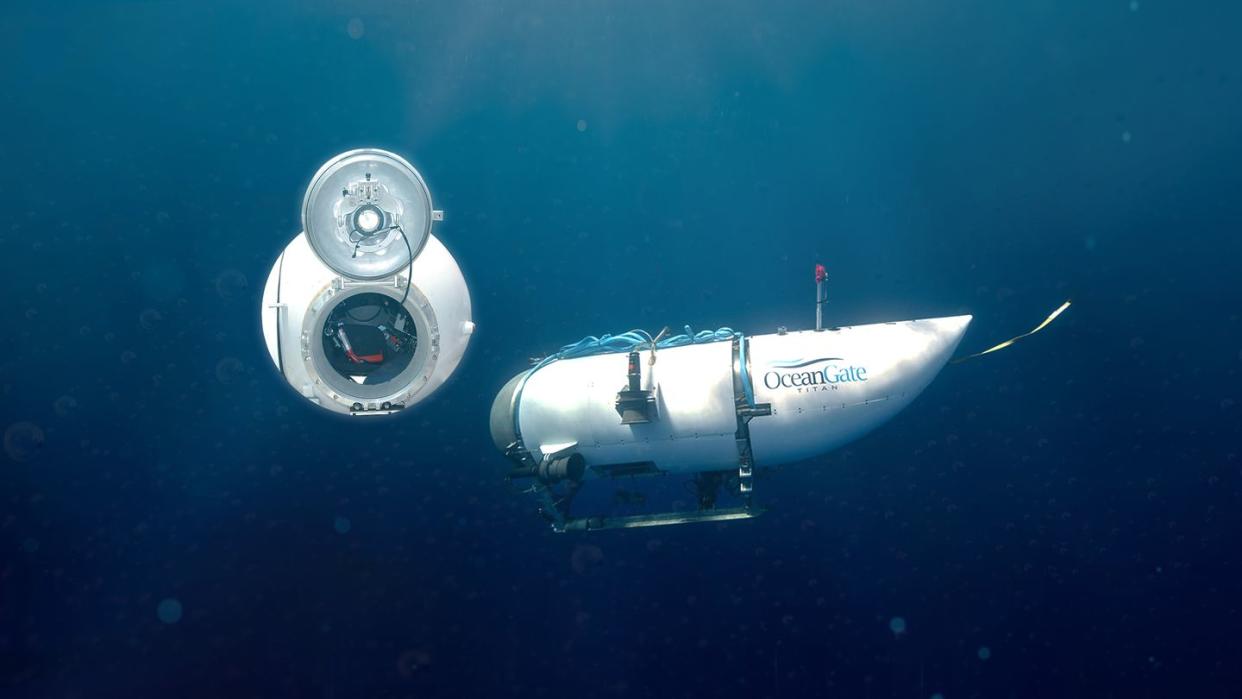The Titan Submersible’s Carbon Fiber Was Supposed to Make History. Tragically, It Did.

"Hearst Magazines and Yahoo may earn commission or revenue on some items through these links."
The Titan, a submersible belonging to the ocean tourism company OceanGate, imploded en route to the Titanic wreck in the summer of 2023, which killed all 5 passengers onboard.
While myriad issues likely contributed to the vessel’s demise, Titan’s carbon fiber hull has drawn particularly scrutiny, especially because it was one of the first submersibles to use such a material.
A new study from the University of Houston uses computer simulations to analyze buckling strength of thin-walled cylinders with certain imperfections, not unlike the Titan itself, and found that carbon fiber ‘micro buckling’ could’ve caused the hull to lose a considerable amount of strength.
In the summer of 2023, the world received a tragic reminder of just how inhospitable the deep ocean is to the species Homo sapiens. On June 18, during the first planned dive of the year to the famous shipwreck Titanic—located 350 miles off the coast of Newfoundland—the ocean tourism company OceanGate’s lost contact with its Titan submersible. After days of intensive search, the U.S. Coast Guard found pieces of the lost sub only 1,600 feet from the Titanic’s bow and concluded that the vessel had imploded, killing all on board.
What followed was a flurry of speculation, including a slew of former complaints about the company, about what could’ve gone wrong during Titan’s descent to 12,500 feet below sea level (far beyond the mere 1,090 feet any scuba diver has ever reached). Many soon started pointing to the Titan’s carbon fiber-laden hull, the first submersible to use such a material.
“I never believed that technology of wound carbon fiber filament on the cylindrical hull would work,” James Cameron, director and deep-sea explorer, told The Wall Street Journal at the time. “I thought it was a horrible idea.”
Now, new research from the University of Houston could explain exactly why carbon fiber caused the Titan disaster. In a new paper published in the Proceedings of the National Academy of Science (PNAS), scientists analyzed how thin-walled cylinders, especially slender ones, could succumb to the pressures of the ocean. While the researchers didn’t directly examine the Titan in the paper, the doomed submersible would be an example of such a vessel explored in the paper, which develops equations (using computer simulations) that predict a shell’s buckling strength based on certain imperfections.
“Localized deformation and randomly shaped imperfections are salient features of buckling type instabilities in thin-walled load-bearing structures,” the paper reads. “However, it is generally agreed that their complex interactions in response to mechanical loading are not yet sufficiently understood, as evidenced by buckling-induced catastrophic failures which continue today.”
In the case of the Titan submersible, the tragedy was a slowly growing one as its carbon fiber hull underwent several load pressures during its many descents (nearly a dozen or so) to the Titanic. Carbon fiber is known for being lightweight and strong—both in its crystalline structure and weaving pattern. However, when induced to strong forces, such as the pressures found in the Bathypelagic zone where the Titanic lies, carbon fiber can essentially weaken over time, causing each subsequent descent to be more dangerous than the last.
“It is well known that under compression loading the fibers in such [carbon fiber] composites are susceptible to micro-buckling and that they may delaminate from the matrix that surrounds them,” University of Houston’s Roberto Ballarini, a co-author of the study, said in a press statement. ”If the Titan’s hull experienced such damage under the extreme compressive pressures it experienced during its dives, then its stiffness and strength would have significantly decreased, and together with the inevitable geometric imperfections introduced during its manufacturing, may have contributed to its buckling-induced implosion.”
While the Titan tragedy was likely an avoidable one—reporting shows that cost- and time-saving measures attributed to the vessel’s faulty design—its example will likely bolster submersible design into the future, especially after the federal investigators deliver their findings in the coming months. This research, along with forthcoming findings, will hopefully keep future Titaniacs from meeting a similar fate as the doomed vessel of their immense devotion.
You Might Also Like
